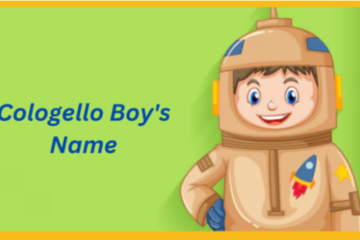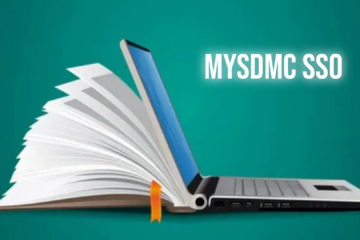Introduction
Brian Harmon, UX designer extraordinaire, has become a trailblazer in the world of user experience design. With an exceptional blend of technical expertise, creativity, and user empathy, Harmon has redefined how digital platforms connect with their audiences. Whether leading innovative design projects or crafting user-friendly interfaces, Brian Harmon UX designer has established himself as a name synonymous with excellence in the field.
This article explores the fascinating journey of Brian Harmon, highlighting his evolution from a graphic designer to a celebrated UX professional. We’ll delve into his career milestones, design philosophy, and the impact of his user-centered approach.
The Journey of Brian Harmon: From Graphic Design to UX Excellence
Early Career and Education
Brian Harmon’s rise to prominence in UX design was marked by a non-linear path. Starting in graphic design, Harmon’s interest in user interaction sparked his passion for UX. His academic foundation in Computer Science, coupled with specialization in Human-Computer Interaction, provided him with both technical and user-centered insights.
This combination of skills equipped Brian Harmon UX designer to bridge the gap between visual appeal and usability, allowing him to create engaging digital experiences. In his early career, he worked on crafting intuitive interfaces for various digital platforms, emphasizing usability alongside visual elements.
Transition to UX Design
The pivotal moment in Harmon’s career came when he transitioned fully into UX design. Driven by his fascination with user behavior and interaction, he immersed himself in the principles of user-centered design. By focusing on enhancing digital products’ usability and aesthetic quality, Harmon quickly became a sought-after UX designer.
His leadership on global projects for major brands showcases his ability to create intuitive and impactful designs. Whether leading teams or designing independently, Brian Harmon UX designer has remained steadfast in his mission to make user interactions seamless and enjoyable.
Brian Harmon’s Design Philosophy: Putting Users First

User-Centered Design (UCD)
At the heart of Harmon’s work is his commitment to User-Centered Design (UCD). This design methodology ensures that users’ needs and expectations remain central at every stage of the process. By prioritizing empathy, Brian Harmon UX designer understands user behaviors, pain points, and goals to create designs that solve real-world problems.
Through iterative feedback loops, prototyping, and rigorous user testing, Harmon refines his projects based on user data. His ability to translate user insights into actionable design improvements ensures the final product is both functional and intuitive.
Storytelling in UX Design
Another pillar of Harmon’s design philosophy is storytelling. He approaches every design project as a narrative where users play the leading role. By crafting meaningful and cohesive user journeys, Brian Harmon UX designer ensures that each interaction resonates with users.
This narrative-driven approach is particularly evident in his work on e-commerce platforms. By guiding users through seamless purchasing pathways, he has improved both user satisfaction and conversion rates.
Brian Harmon UX Designer: Notable Projects, Expertise, and Leadership
In the world of user experience (UX) design, Brian Harmon UX Designer stands out as a visionary whose contributions have redefined industry standards. From revolutionizing in-car interfaces to creating immersive applications for music enthusiasts, his work showcases innovation, user-centric thinking, and exceptional design prowess. This article delves into his most significant projects, methodologies, and the challenges he has overcome while exploring frequently asked questions about his career.
Notable Projects and Contributions by Brian Harmon UX Designer
Revolutionizing In-Car User Experiences
One of Brian Harmon UX Designer’s most acclaimed achievements is his groundbreaking work on in-car user interfaces at Harman International. He integrated advanced touch controls, voice recognition, and personalized settings into vehicles, enabling seamless interaction between drivers and their cars. This transformative project not only set new benchmarks for automotive UX design but also elevated the driving experience by making technology accessible, intuitive, and responsive.
Innovative UX Design for Music Lovers: The Roon App
Another highlight of Brian Harmon UX Designer’s career is his role as the Principal UI/UX Designer for the Roon app. This platform, adored by audiophiles, is renowned for its sleek design and immersive user experience. Harmon’s meticulous attention to detail ensured that Roon remains a user-focused platform while introducing innovative features. His close collaboration with product and engineering teams was instrumental in delivering an app that meets the needs of music enthusiasts worldwide.
Tools and Methodologies Driving Brian Harmon UX Designer’s Success
Design Thinking and Prototyping
A staunch advocate of design thinking, Brian Harmon UX Designer approaches challenges by empathizing with users, defining their needs, and creating solutions that resonate. Through prototyping, he tests concepts early in development, gathering valuable feedback to refine designs iteratively. This method ensures that projects are optimized for user satisfaction, reducing risks and delivering polished results.
Fostering Cross-Disciplinary Collaboration
Harmon emphasizes the power of teamwork. His collaborative design process involves developers, product managers, and stakeholders to create holistic solutions. By combining diverse perspectives, Brian Harmon UX Designer fosters creativity, resulting in designs that are both functional and groundbreaking.
Challenges in UX Design and Brian Harmon’s Solutions

Designing for Diverse User Needs
Modern UX design demands inclusivity to cater to diverse audiences. Recognizing this, Brian Harmon UX Designer employs extensive user research to develop personas that guide his projects. By incorporating cultural sensitivity and accessibility into his designs, he ensures that products resonate with users globally.
Integrating Emerging Technologies in UX
Harmon is a trailblazer in leveraging emerging technologies like Artificial Intelligence (AI), Virtual Reality (VR), and Augmented Reality (AR) in UX. His innovative approach includes mood-responsive interfaces and adaptive designs, such as in-car audio systems that adjust to the user’s emotions. These advancements demonstrate his commitment to pushing the boundaries of UX design.
Brian Harmon UX Designer’s Role as a Mentor and Leader
In addition to his career accomplishments, Brian Harmon, a UX Designer, has made valuable contributions to the design community. By leading workshops, speaking at conferences, and mentoring aspiring designers, he fosters a culture of innovation and inclusivity. His leadership style prioritizes collaboration, creativity, and continuous learning, inspiring countless professionals to adopt user-centered practices.
The Future of UX Design According to Brian Harmon: A Visionary Approach
Brian Harmon, a renowned UX designer, continues to redefine user experiences with a forward-thinking approach that emphasizes inclusivity, personalization, and adaptive design. His insights into the evolving field of UX design offer a roadmap for designers seeking to create meaningful digital experiences.
Increasing Focus on Accessibility
Accessibility remains a cornerstone of Brian Harmon’s UX design philosophy. In a digitally connected world, ensuring that products are usable by people of all abilities is not just a legal requirement—it’s an ethical obligation. Harmon emphasizes that accessibility should be embedded into the design process from the start, promoting inclusivity across diverse user groups. By adopting inclusive design practices, UX designers can break down barriers and create products that serve everyone, regardless of physical, cognitive, or sensory challenges.
Personalization and Adaptive Design
One of the most compelling trends in UX design, according to Brian Harmon, is the rise of personalization. With the advent of artificial intelligence (AI) and machine learning, digital products can now adapt to individual user preferences in real time. Harmon foresees a future where UX design leverages these technologies to deliver hyper-personalized and adaptive experiences. These advancements will enable designers to create dynamic interfaces that evolve alongside users, enhancing engagement and satisfaction.
Brian Harmon’s perspective on adaptive design highlights the importance of staying user-centered while embracing technology. He believes that integrating user data responsibly allows designers to build interactions that feel intuitive and meaningful, fostering a deeper connection between users and digital products.
The Power of Empathy and Storytelling in UX
Brian Harmon emphasizes the critical role of empathy and storytelling in UX design, beyond just technology.He champions the idea that understanding user needs and crafting narratives around their experiences can lead to more impactful designs. By focusing on the human element, Harmon encourages designers to prioritize the emotional and practical aspects of user interactions, ensuring that every touchpoint adds value.
Collaboration as the Key to Innovation
Brian Harmon also highlights the role of collaboration in driving innovation within the UX design industry. He advocates for breaking down silos and fostering cross-disciplinary teamwork to create products that resonate with users. His ability to blend technical expertise with creative problem-solving has set him apart as a leader in the field.
Brian Harmon’s Impact on UX Design
Brian Harmon’s influence extends far beyond his individual projects. His commitment to user-centered design and innovative strategies has set new benchmarks for the UX industry. Designers looking to shape the future of UX can draw inspiration from Harmon’s approach, which combines empathy, technology, and collaboration to create transformative digital experiences.
FAQs of brian harmon ux designer
Q: Who is Brian Harmon in the UX design industry?
A: Brian Harmon is a leading UX designer known for his innovative approach to creating user-centered digital experiences. His work focuses on accessibility, personalization, and adaptive design, setting new standards in the UX field.
Q: Why does Brian Harmon emphasize accessibility in UX design?
A: Brian Harmon believes that accessibility is both a legal requirement and an ethical imperative. By ensuring digital products are usable by everyone, regardless of abilities, designers can create inclusive and impactful user experiences.
Q: What role does AI play in Brian Harmon’s vision for UX design?
A: According to Brian Harmon, AI and machine learning are key to delivering personalized and adaptive user experiences. These technologies enable UX designers to create interfaces that evolve with user preferences, enhancing engagement and satisfaction.
Q: How does Brian Harmon incorporate storytelling into UX design?
A: Brian Harmon uses storytelling as a tool to understand user needs and craft meaningful narratives. This approach helps create designs that resonate emotionally and practically with users.
Q: What can designers learn from Brian Harmon’s approach to UX design?
A: Designers can learn to prioritize empathy, embrace technology, and foster collaboration by following Brian Harmon’s principles. His focus on creating user-centered designs serves as a blueprint for shaping the future of UX.
Conclusion of brian harmon ux designer
Brian harmon ux designer, exemplifies the transformative power of combining empathy, technology, and storytelling. His unwavering commitment to accessibility and personalization continues to inspire designers to push boundaries. By adopting Brian Harmon’s user-centered approach, the next generation of UX professionals can create products that not only meet user needs but also elevate the digital experience.
Stay in touch for more updates and alerts visit: The Touch Cric!




